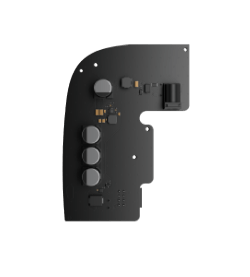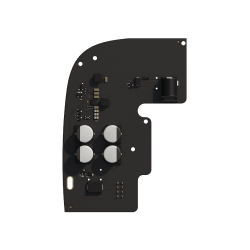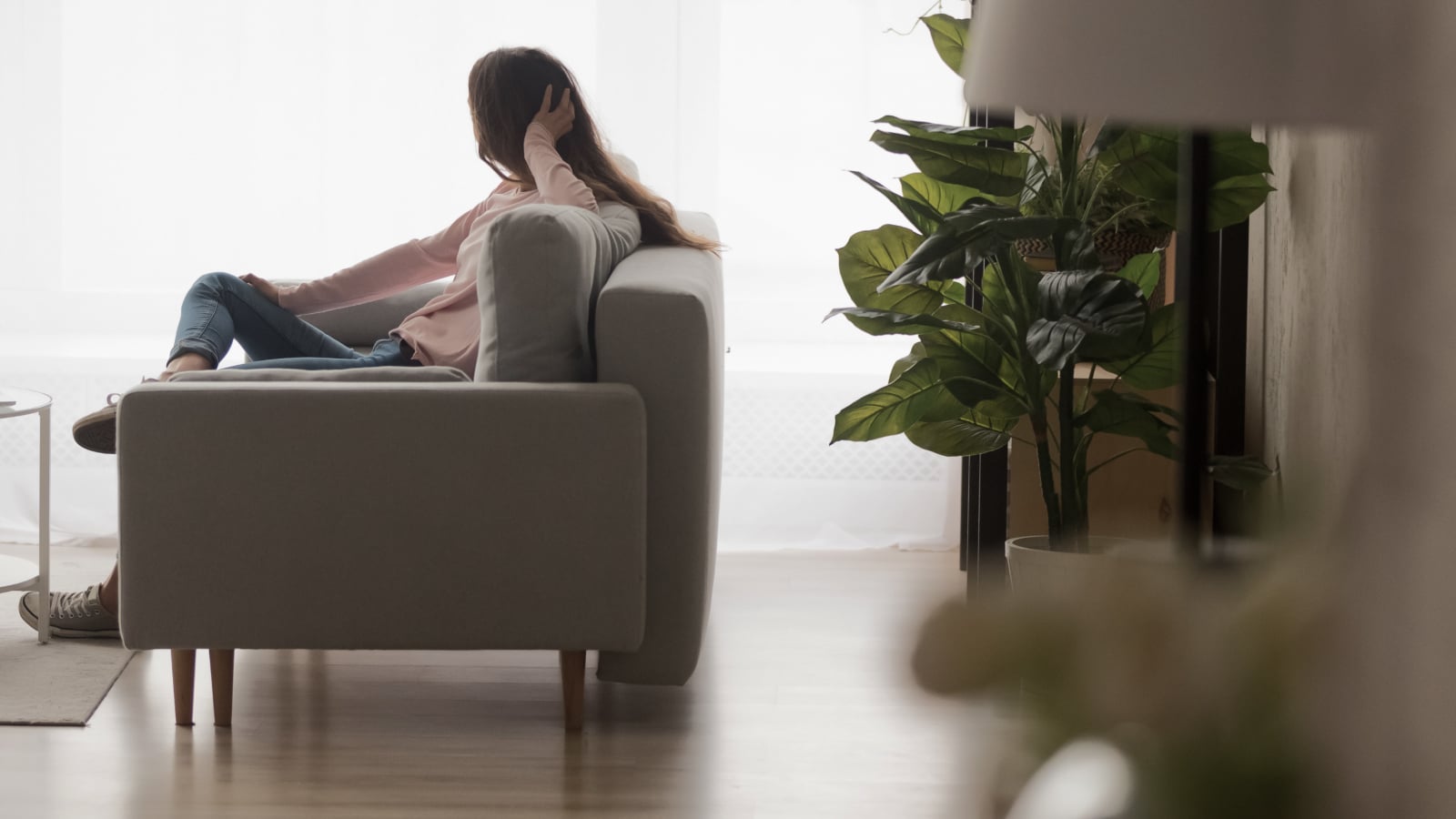Many regions around the world experience sudden blackouts and regular power outages. Homeowners in remote villages, small towns, farms, islands, and off-season resorts struggle to meet their basic needs during prolonged outages, particularly during storms or heat waves. Business owners lose access to electronic locks and CCTV cameras, while farms face the shutdown of automated care systems for plants and livestock.
Backup power sources such as generators, power stations, inverters with batteries, and other alternative sources can partially cover the needs during no-power periods. However, if too many devices are connected to the backup power source simultaneously, it can drain in less than an hour. There's also a risk of overheating or damage to the equipment due to overload.
Even during a blackout, the Ajax system safeguards your facility without interruption. But it doesn't stop there — Ajax also helps you build an energy-independent backup power supply with optimized consumption. Ajax automation devices can automatically disconnect non-essential appliances or high-consumption equipment when needed, helping you reduce energy waste and prioritize what matters. In this article, you'll find out how Ajax optimizes power consumption, protects the backup power supply from overload, and prevents household appliances from voltage or current surges and overheating.
How to determine which devices need a backup power supply during an outage
The first step in preparing for power outages is to identify the equipment you really need to keep running. As resources are often limited, efficiency and self-sufficiency are key. Start with the essentials: food preparation and storage, access to water, internet connectivity, lighting, and heating when the weather is chilly.
In a typical apartment with a gas stove, central heating, and mains water, you may only need to back up your router and refrigerator. In this case, battery-powered lights can replace main lighting. However, the list of essentials tends to grow for private homes or new builds, as they may have a different plumbing and heating infrastructure. For example, they may use gas boilers, water pumps, electric stoves, and independent HVAC systems.
Once your essential devices are mapped out, the next step is to spot energy vampires — appliances that continue to consume electricity even in standby mode. These include laptops, desktop computers, smart speakers, dishwashers, washing machines, dryers, microwaves, TVs, streaming devices, and printers. A smart way to reduce unnecessary energy loss is to automate the shutdown of such devices when switching to backup power. To conserve energy even further, limit the use of high-consumption appliances wherever possible. Devices like electric kettles, coffee machines, and hair dryers demand significant power and can quickly drain your backup supply. Try to use them only during scheduled power-on hours. Better yet, switch to energy-efficient models or battery-powered alternatives.
How to calculate energy consumption
Manufacturers typically list both the maximum and average power consumption of electrical appliances in watts (W) or kilowatts (kW), though sometimes only the peak value is provided. For example, a modern refrigerator might have a maximum power of 200 W. This means that if its compressor runs continuously for an hour, it would consume 200 watts per hour (or 0.2 kWh) of electricity.
However, appliances like refrigerators, boilers, and heaters don't operate continuously. They run in cycles, alternating between active and standby modes, so their actual energy consumption is usually much lower than the maximum stated on the technical specification.
The actual (or average) consumption can be calculated using Ajax smart sockets1: simply connect the selected appliances to them and monitor the consumption in the Ajax app for several hours.

The standard household electric meter can do the job as well. Here's a simple step-by-step method to estimate how much electricity your appliances consume:
- Turn off all appliances except the ones you want to measure.
- Write down the current electric meter reading.
- To get a reliable average, keep the selected devices running for several hours — ideally 3 to 5 hours.
- Record the meter reading again once the time is up.
- Subtract the initial reading from the final one to get the total electricity used during the test period.
- Divide by the hours the appliances were running to calculate their average hourly consumption.
Some modern electric meters display real-time consumption, which can be incredibly convenient. However, these readings don't always reflect the true picture. Many household appliances — such as refrigerators, water heaters, or electric pumps — operate in cycles, turning on and off throughout the day. As a result, the real-time readings can show zero consumption in one moment and a significant spike in the next.
It's better to track consumption over several hours to get a more accurate value. Calculating the average over time smooths out fluctuations caused by cyclical appliance operation and gives you a more precise estimate of typical consumption.
How to calculate the expected runtime of a device on a backup power source
The most important specification to consider for an alternative power supply is power output, which is measured in watts (W). The measurement indicates the maximum amount of energy the backup source can deliver at any given moment. The higher the wattage, the more devices you can connect to a power source and run simultaneously.
For battery-powered sources, capacity is equally important. Measured in watt-hours (W·h), it indicates how much energy the battery can store and supply, essentially telling you how long it can power your devices under a specific load.
Manufacturers typically list two types of power ratings:
- Nominal power output — the continuous power the system can deliver over time.
- Peak power output — the short bursts of higher output that the power source can handle, such as when powering up appliances with a high inrush current (refrigerators or pumps).
Not all appliances consume electricity at a steady rate. Some have a high inrush current, meaning they draw significantly more power during startup than during regular operation. This surge usually lasts a few seconds or minutes, but can overload an underpowered backup source.
Appliances with a high inrush current include refrigerators, gas boilers, water pumps, induction cooktops, microwaves, vacuums, and power tools. When choosing a backup power supply, a good rule of thumb is to include a power reserve of 1.5 to 2 times the nominal capacity. Don't forget to account for efficiency losses in voltage converters — these typically range from 10% to 20%. This ensures you'll have enough power to start multiple high-demand devices simultaneously without tripping the backup.
To preserve battery health and extend its lifespan, it's best to avoid a full discharge of your backup power supply. Deep discharges can significantly degrade battery performance over time. Most inverters and portable power stations can automatically prevent complete depletion, but it's still a good idea to check the manufacturer's guidelines for proper usage and recommended discharge levels.
Exceeding the maximum load of the backup power supply can lead to its permanent damage.
To estimate how long your backup power supply will support the essential devices, sum up the power consumption of all required devices. For appliances with high inrush current, use the peak power output listed in the manufacturer's technical specifications, not the nominal. To make your estimate more accurate, add 15% of the total power to previse energy losses in voltage converters and any occasional spikes in device consumption.

Sometimes, battery manufacturers only specify capacity in ampere-hours (A·h), especially when the battery is designed to work with an inverter. However, to calculate how long your backup will run, you need to know the battery's output in watt-hours (W·h). To convert ampere-hours to watt-hours, check the output voltage (V) in the battery's specifications. Most inverter-compatible batteries on the market operate at 48 V⎓ (DC).
Use this simple formula:
Backup source power output, W⋅h = Battery capacity, A·h Battery output voltage, V
Example: if a battery has a capacity of 100 A⋅h and an output voltage of 48 V⎓, the total output power is 4,800 W⋅h.
Example of calculation
Site: apartment.
Backup power source: power station with an output power of 1,000 W⋅h.
Device | Maximum consumption | Average consumption |
Refrigerator | 170 W | 100 W |
Router | 20 W | 12.5 W |
LED bulbs, 4 pieces | 10 W | 10 W |
Total: | 192.5 W | |
When calculating total power consumption, treat devices differently based on how they consume power. For example, the refrigerator has a high inrush current, so you should use its maximum power consumption value — 170 W — rather than the average. It's safe to use the average value for devices with stable power consumption, like routers and LED bulbs.
1000 ÷ (192.5 + 28.4) = 1000 ÷ 221.4 = 4.51
A backup power source with a 1,000 W output can provide approximately 4 hours and 30 minutes of runtime. If you upgrade to a source with a 1,800 W output, you can extend the runtime to around 8 hours and 10 minutes.
Examples based on site type
The examples provided above are for illustrative purposes only. They are based on a typical set of household devices with average power outputs and consumption.
Private residence

Room | Devices operating from the mains | Devices operating from a backup power source |
Utility room | General lighting fixtures Gas boiler Water pump WasherDryer | General lighting fixtures Gas boiler Water pump |
Kitchen | General lighting fixtures Accent lighting fixtures Refrigerator Microwave Electric oven Gas stove Dishwasher Toaster Electric kettle | General lighting fixtures Refrigerator Gas stove |
Living room | General lighting fixtures Accent lighting fixtures Floor lamp TV Sound system | General lighting fixtures |
Office | General lighting fixtures Desk lamp Router Desktop computer Laptop | General lighting fixtures Router |
Bedroom | General lighting fixtures Accent lighting fixtures TV | General lighting fixtures |
Bathroom | General lighting fixtures LED mirror Heated towel rack | LED mirror |
Average consumption per 1 hour | ≈9.69 kW·h | ≈0.47 kW·h |
Total power | ≈13.9 kW | ≈1 kW |
In this example, you can use either a power station or a combination of an inverter and battery pack. To keep a private residence powered for around 4 hours during an outage, you'll need a backup that delivers at least 1,800 W of output power and has a battery capacity of 2,500 W·h or more.
Coffee shop

Zone | Devices operating from the mains | Devices operating from a backup power source |
Coffee bar | General lighting fixtures Refrigerator Display refrigerator with a built-in lighting Microwave Coffee machine Coffee grinder Drip coffee maker Mixer Blender Cash register POS terminal | General lighting fixtures (half) Refrigerator Display refrigerator (lighting is off) Coffee machine Coffee grinder Cash register |
Seating area | General lighting fixtures Accent lighting fixtures HVAC TV Sound system | General lighting fixtures (half) Thermostat-controlled electric heater (for use during cold seasons) |
Restroom | General lighting fixtures LED mirror | General lighting fixtures |
Utility room | General lighting fixtures Water heater Router | Router Water heater |
Average consumption per 1 hour | ≈2.95 kW·h | ≈1.05 kW·h |
Total power | ≈9.05 kW | ≈4.6 kW |
This example doesn’t include a POS terminal, as it's typically a mobile device with a built-in battery that can last up to 72 hours, which can be recharged from the mains during off-peak hours. Also, instead of a built-in sound system, a wireless portable speaker can be used and charged like a POS terminal.
Overall, to ensure 6 to 8 hours of autonomous operation for a coffee shop, a practical solution would be a 5 kW·h inverter paired with a 10 kW·h battery.
Ajax products and their role in power supply management
Automating the shutdown of non-essential appliances with Ajax is only possible when a backup power source is connected directly to the facility’s main distribution board and switching between mains and backup power is handled via an ATS (automatic transfer switch).
Once the main power is restored, the system can be configured in two ways:
- All previously active appliances are turned back on automatically.
- Appliances remain off until you manually turn them on.
For safety and proper operation, be sure to have your backup power system installed and configured by a licensed electrician.
No matter the size or type of facility, a smart power management setup requires the right combination of devices. To automatically disconnect non-essential appliances during an outage, you'll need:
- Ajax hub
- Ajax integration module
- Ajax automation devices
- SPDT/DPDT relay
- ATS (automatic transfer switch) — if required
- Backup power source
The backup power sources must be connected directly to the facility's main distribution board. An automatic transfer switch (ATS) is installed inside the distribution board and manages the switching between power sources. In the event of an outage, it automatically switches the supply from the 110–220 V~ mains to the backup source, and back again when power is restored.
The hub is the central brain of the Ajax system, managing communication between all connected Ajax devices. It's typically installed out of sight in a secure location. All Ajax hubs run on a 110–220 V AC, and either come with a built-in backup battery or support connection to an external battery. Ajax hubs that support wireless devices2 have built-in backup batteries providing up to 16 hours of autonomous operation. Superior Hub Hybrid, which supports both wired and wireless Ajax devices, can be connected to a third-party external battery; such a setup can run for up to 60 hours3 during prolonged outages.
An integration module, such as Superior Transmitter Fibra, is required to monitor mains power loss. It connects to the facility's distribution board via an SPDT/DPDT relay. In the Ajax app, the integration module is configured with the Custom event type. This setting ensures that power loss notifications are logged and visible to users, but do not trigger an alarm or send it to the security company's monitoring station.
When a power outage occurs, the ATS instantly switches the facility's power supply from the mains to the backup power source — often so smoothly that users don't even notice. This switch activates the SPDT/contacts, changing their state. The Ajax integration module monitors these contacts and notifies the Ajax hub of the mains power loss once it detects a change. The hub then triggers pre-configured automation scenarios: it powers down non-essential appliances to conserve backup energy while keeping critical systems running. At the same time, the hub sends an instant alert to users, letting them know that the facility is now operating on backup power.
WallSwitch Jeweller power relays can be installed directly after the circuit breakers in the distribution board using a DIN Holder, especially if the electrical network is divided into separate lines. This setup allows WallSwitch to control each line independently. Alternatively, it can be installed inside extension cords and wall outlets.
The Ajax Socket smart plug is typically inserted directly into a standard wall outlet — no wiring required. Electrical devices are then plugged straight into the Socket. Ajax's portfolio also includes smart outlets and light switches designed to replace existing ones, becoming a built-in part of the facility's electrical network.
Ajax power relays and smart outlets have built-in protection against overvoltage, overheating, and overcurrent. For example, if an overvoltage occurs, the Ajax device will automatically turn off, preventing damage to any connected appliances. Once the voltage stabilizes, the device will resume operation automatically.
Protection against overvoltage, overheating, and overcurrent is an additional feature of Ajax devices and does not replace residual-current devices or circuit breakers.
Types of backup power sources
Automated shutdown of non-essential appliances using Ajax is only possible if the backup power source is connected directly to the distribution board and switched via an automatic transfer switch (ATS).
Do not use self-made backup power solutions, devices from unknown manufacturers, or car batteries. These can pose serious safety risks. Always choose certified equipment from trusted manufacturers.
For safety and proper operation, be sure to have your backup power system installed and configured by a licensed electrician.
Take care of fire and life safety while using backup power and lighting sources. The Ajax product portfolio includes fire detectors that instantly respond to heat, smoke, or carbon monoxide, alerting everyone with a built-in siren and sending instant alarms via Ajax apps.
For enhanced protection, you can also integrate an automatic fire suppression system, a firefighting water supply network, and electric door locks to open emergency exits. In case of fire, all integrated fire safety solutions can be activated instantly with a single press of the ManualCallPoint (Red) Jeweller button.
An alternative power source can either store energy or generate it. Energy storage solutions include power stations and stationary or portable batteries. Energy generation sources include fuel-powered generators, solar panels, and wind turbines.
Let's take a closer look at each of these options and how they can support your facility during a power outage.
Power station or inverter paired with a battery

Environmental conditions can significantly impact the performance and lifespan of a backup battery. For instance, low ambient temperatures may increase the discharge rate, reducing the battery's runtime. Always follow the manufacturer's recommended operating temperature range to ensure stable battery operation.
Power stations offer a ready-to-use backup solution without a complex setup. All essential components are assembled in a single enclosure, making these stations portable and easy to install. Some models can operate in uninterruptible power supply (UPS) mode, meaning they don't require an automatic transfer switch (ATS) when connecting to the facility's distribution board. They simply pass 110–220 V~ mains through while charging simultaneously. And if a power outage occurs, the station supplies connected devices from a built-in battery. Other power stations do require an ATS to be integrated into the facility's distribution board. In this setup, the ATS automatically transfers the load to the power station in case of an outage.
The main disadvantage of most power stations is their low output power and capacity. Typically, they offer up to 2 kW of output, which may not be sufficient for larger homes or energy-intensive appliances, but is often ideally suited for apartment use. While more powerful models are available, they come at a significantly higher cost.
If you need more output power and capacity than a typical power station can provide, consider a setup with an inverter and external batteries. These systems offer greater flexibility: output power typically starts at 3 kW, and the total capacity can be scaled by adding more batteries. This solution is well-suited for larger apartments, private houses, or small offices, as it can offer a longer backup time. The operating principle is similar to a power station, but the setup consists of several components that a qualified electrician must carefully select, connect, and configure.
Classic power stations weren't initially designed to withstand frequent and prolonged power outages. But in wartime Ukraine, they prove to be real backup superheroes. Power stations are surprisingly efficient in real-world use: they are affordable, quick to charge, and ideal for powering only a few critical devices. Power stations are generally less reliable over time compared to inverter-and-battery setups. They offer similar runtime but have more charge cycles. That's why many experts recommend installing an inverter paired with an external battery, even for an apartment. Although this solution has a slightly higher initial cost, it ensures long-term reliability and flexibility. For example, when the battery reaches the end of its service life, you only need to replace the battery, not the entire setup. That makes it a more cost-effective investment in the long run.
Fuel generators

Fuel generators convert fuel into electricity and are essential in situations where there is no access to mains power. While they're often used as a last-resort backup power source, they remain a reliable option during outages.
There are two main types:
- Household generators (1–20 kW): suitable for powering private homes, small shops, pharmacies, and cafes.
- Industrial generators (up to 2,500 kW): designed for large facilities like hospitals, office buildings, and shopping centers.
A major benefit of fuel generators is their ability to deliver consistent power output as long as they have fuel, regardless of the number of connected devices (as long as total consumption stays within rated capacity). For example, a 2 kW generator will still run at 2 kW, even if the load is just 1 kW.
However, fuel generators come with several limitations. They are not suitable for use in apartments due to the noise, gas emissions, and potential fire hazards. Additionally, their installation and use are governed by strict regulations, which may prohibit their operation in certain environments — for instance, pharmacies or coffee shops located on the ground floor of residential buildings. Smaller, household-grade generators usually require manual startup, while larger industrial models can start automatically during an outage. Another important consideration is the need for regular refueling to maintain continuous operation, which may not be convenient or practical in all situations.
Solar panels

Generating energy from the sun (and wind) is indeed environmentally friendly. It helps to reduce carbon dioxide emissions and lowers dependence on fossil fuels. However, solar systems' effectiveness varies greatly depending on geographic location. In regions with defined seasons, solar output drops significantly during fall and winter. For example, in Ukraine, winter generation can fall to just 5% of a panel's nominal capacity.
A typical 1–2 m² solar panel can generate about 350–450 W. In summer, solar panels paired with an inverter with battery can fully support a private home's daytime electricity needs, but performance drops in winter due to limited sunlight.
It's important to note that not all regions experience the same seasons or sun coverage. Areas near the equator often receive more consistent solar energy year-round, making solar power more viable as a primary source of electricity. In contrast, urban environments with taller buildings, tree cover, air pollution, or limited space can further reduce solar panel efficiency. This limitation means solar energy is best suited for private homes, farms, agrarian businesses, campsites, motorhomes, and remote sites without access to the mains. Nevertheless, within cities, solar energy can still be effectively used for specific applications, such as powering streetlights or portable systems.
How Ajax operates during a power outage
Most Ajax wireless devices are built to be truly autonomous. Aside from smart sockets, outlets, switches, and power relays, which do require a connection to the mains, other devices come with pre-installed batteries that can last up to 7 years4. When the batteries eventually run out, they can be easily replaced.
Hubs and range extenders that work with wireless Ajax devices also include built-in backup batteries, support a battery-saving mode, and can be connected to an external power source using an Ajax PSU. For example, Hub BP Jeweller, when connected to a 12 V⎓ air-zinc battery with a 600 A⋅h capacity, can operate for up to 18 months in full-function mode. If you switch on battery-saving mode, the runtime can stretch to an impressive 69 months.
When it comes to video surveillance, Ajax makes sure your system stays online even off-grid. All Ajax video devices can run off a single backup battery, which keeps your cameras recording uninterrupted. Ajax NVR connects to this backup using 12 V PSU for NVR, which replaces the standard 110/230 V~ power supply unit inside the recorder's enclosure. Ajax DoorBell also comes with a built-in backup battery, which is good for up to 2 hours of autonomous use. But if you're after a more extended runtime, it's better to connect it to an external battery along with other wired Ajax IP cameras.
Ajax wired devices are supplied by either the Superior Hub Hybrid control panel or the Superior LineSupply Fibra module. To keep everything running smoothly during an outage, the hub has built-in terminals on its board for connecting a 12 V⎓ backup battery, and a connection cable is conveniently included in the complete set. The same backup setup works for the MultiTransmitter and vhfBridge integration modules.
Now, what happens when the mains go off? All Ajax hubs instantly notify users of the outage5, so you'll know exactly when the facility has switched to backup power. Even in a blackout, the Ajax system keeps your site fully protected. On top of that, any Ajax device connected to external power, such as smart sockets, relays, or wired detectors, can also send alerts when its own power supply is interrupted. This is especially handy if your system is split across different electrical circuits or multiple backup sources, giving you a clear view of what's still online and what's not.
One of the smartest things about Ajax automation is how it helps you avoid unnecessary energy use after the mains come back on. The Superior MultiRelay Fibra four-channel relay and LightSwitch switches can be configured to remain off, so they don't turn devices back on once power is restored. Let's say you've turned off the lights and left the house. If there's a blackout while you're away, you don't need to worry about coming home to everything running again. Ajax light switches will keep the lights off, and the relay won't reactivate any connected appliances. It's a small detail that saves energy and adds a layer of control you'll appreciate.
Let's sum up
In a world where power outages have become increasingly common, investing in household energy independence is no longer just a convenience — it's a necessity. The solutions explored in this article highlight how the Ajax system is more than just a security platform. It's a strong foundation for creating a reliable backup power solution.
Of course, the ideal setup depends on the site size, energy needs, and budget. This guide will help you navigate the options — from power stations and inverters to fuel generators and solar energy — to make an informed decision that fits your unique request.
We recommend contacting official Ajax Systems partners for system design and installation recommendations. They'll help you select the right equipment, configure the system properly, and ensure everything runs smoothly from day one.
If a device connected to an Ajax smart socket consumes less than 15 W, the system may display inaccurate consumption data or be unable to register it at all.
The following Ajax hubs come with a built-in backup battery: Hub (2G) Jeweller, Hub (4G) Jeweller, Hub Plus Jeweller, Hub 2 (2G) Jeweller, Hub 2 (4G) Jeweller, and Hub 2 Plus Jeweller. All other Ajax hubs support connection to an external 12 V⎓ backup battery.
When connected to a 12 V⎓, 7 A·h backup battery, Superior Hub Hybrid can power up to 30 wired devices for up to 60 hours. Enabling Battery Power Saver mode can extend this runtime up to 200 hours.
Battery life varies depending on the specific Ajax device and its operating conditions.
The hub sends a power loss notification only if it is not connected to the facility's backup power supply.
Roman Konchakivskiy
Head of Ajax Academy


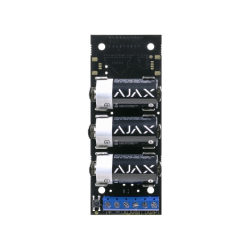


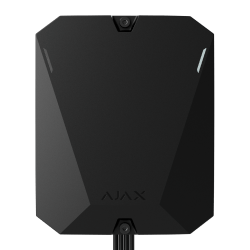
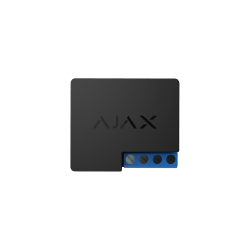
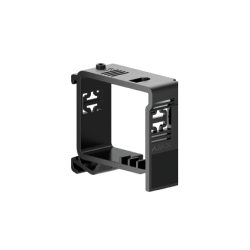
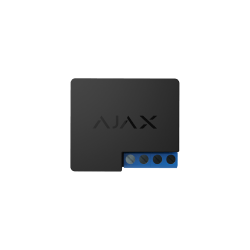

![LightSwitch (1-gang) [120] Jeweller](/api/cdn-img/?img=%2Fupload%2Fls_120_1_gang_black_715a1a19d0%402.png&1732142073)

